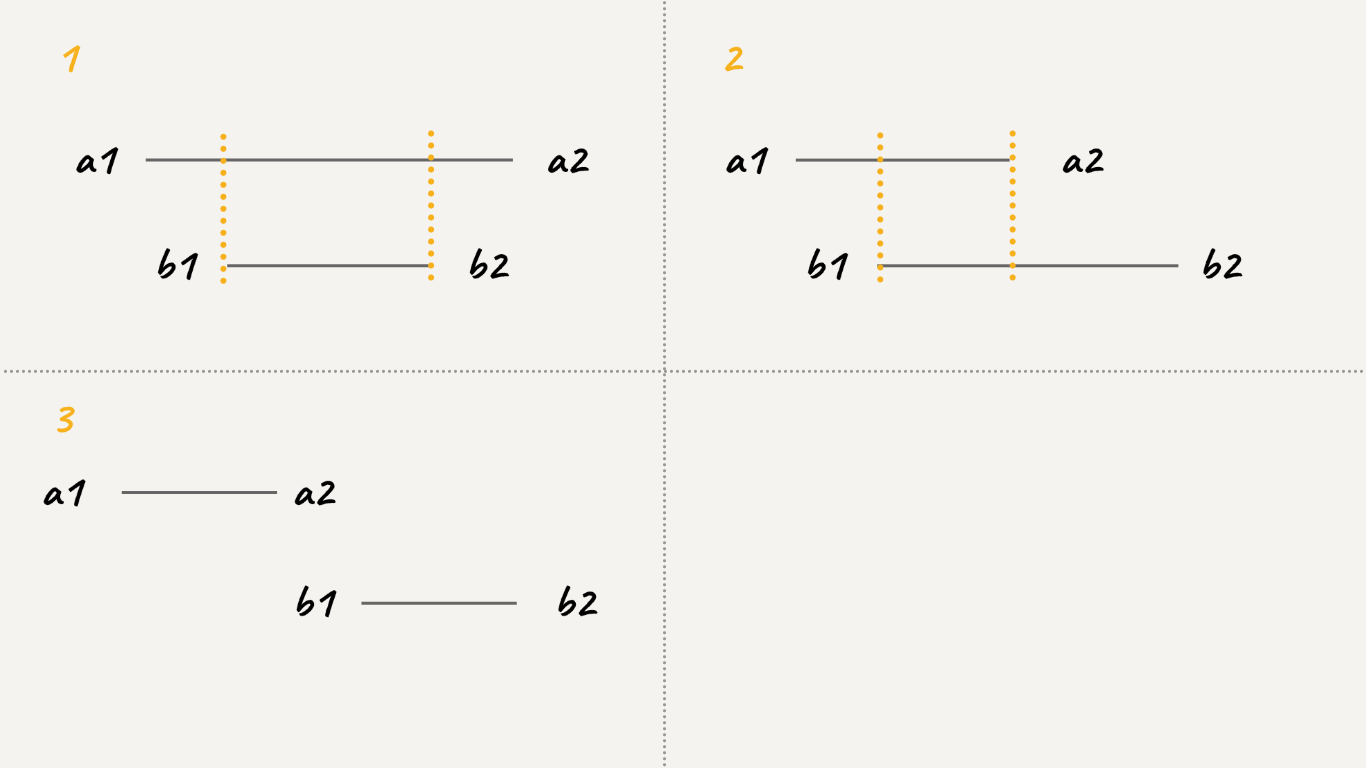1288. 删除被覆盖区间
1288. 删除被覆盖区间
题目
Given an array intervals where intervals[i] = [li, ri] represent the interval [li, ri), remove all intervals that are covered by another interval in the list.
The interval [a, b) is covered by the interval [c, d) if and only if c <= a and b <= d.
Return the number of remaining intervals.
Example 1:
Input: intervals = [[1,4],[3,6],[2,8]]
Output: 2
Explanation: Interval [3,6] is covered by [2,8], therefore it is removed.
Example 2:
Input: intervals = [[1,4],[2,3]]
Output: 1
Constraints:
1 <= intervals.length <= 1000intervals[i].length == 20 <= li < ri <= 10^5- All the given intervals are unique.
题目大意
给你一个区间列表,请你删除列表中被其他区间所覆盖的区间。
只有当 c <= a 且 b <= d 时,我们才认为区间 [a,b) 被区间 [c,d) 覆盖。
在完成所有删除操作后,请你返回列表中剩余区间的数目。
解题思路
- 按照区间的起点进行升序排序,若起点相同时按照区间的终点进行降序排列;
- 排序之后,两个相邻区间可能有如下三种情况:

- 对于情况一,找到了一个覆盖区间,
count ++; - 对于情况二,两个区间可以合并,更新终点(因为区间已按起点升序排序,所以只需要更新终点);
- 对于情况三,两个区间完全不相交,更新起点和终点;
- 最后返回总区间数减去覆盖区间数
intervals.length - count;
代码
/**
* @param {number[][]} intervals
* @return {number}
*/
var removeCoveredIntervals = function (intervals) {
// 按照起点升序排列,起点相同时,按终点降序排列
intervals.sort((a, b) => {
if (a[0] == b[0]) {
return b[1] - a[1];
}
return a[0] - b[0];
});
// 记录合并区间的起点和终点
let left = intervals[0][0],
right = intervals[0][1],
count = 0;
for (let i = 1; i < intervals.length; i++) {
let item = intervals[i];
// 情况一,找到覆盖区间
if (right >= item[1]) {
count++;
}
// 情况二,找到相交区间,更新终点
if (right >= item[0] && right <= item[1]) {
right = item[1];
}
// 情况三,完全不相交,更新起点和终点
if (right < item[0]) {
left = item[0];
right = item[1];
}
}
return intervals.length - count;
};
